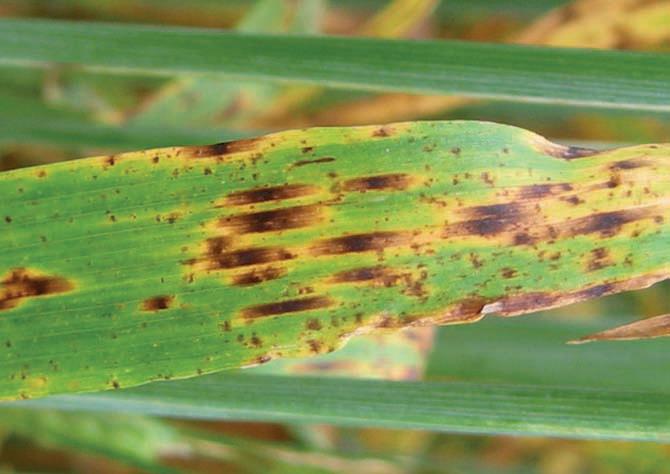Spring Barley, June 2019
14 June 2019The risk of ramularia is enhanced by ample leaf wetness from emergence up until ear emergence so the current wet weather is compensating for the earlier dry weather. Another key risk is plant stress at flowering and early onset senescence, so much of this risk is very hard to judge at this stage. For this season chlorothalonil is an essential component of T2 sprays to manage ramularia risk. Because of resistance in SDHIs, strobilurins and azoles, chlorothalonil is the only effective fungicide left to manage the disease, and the best timing is at booting to very early ear emergence. Flowering and senescence are the major triggers of the symptoms, but other stresses also play a part and include bursts of sunshine, fluctuations in temperature, nutrient deficiencies and the presence of other foliar diseases.
Sprays need to be on ahead of ramularia symptoms appearing on final leaves one and two and have to persist for long enough to keep the crop green well into grain fill. This is why booting is the best compromise timing – aiming the spray at flag leaf emergence is often too early and not the best approach. The ‘midway’ flag leaf timing between T1 and T2 is often too late for early protection and too early for ramularia and late season greening. Of course, there will be years where a compromise flag leaf timing does OK – it was comparable in our trials last season because in the heat crops went off early so the usual benefits of late-season greening didn’t come through as they would in a more ‘normal’ season.
Sign up to the FAS newsletter
Receive updates on news, events and publications from Scotland’s Farm Advisory Service

